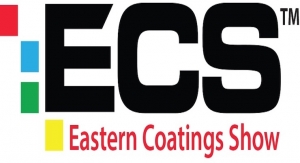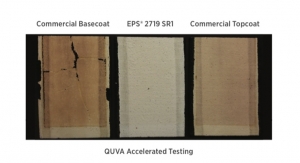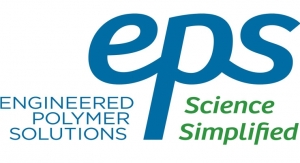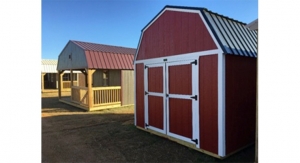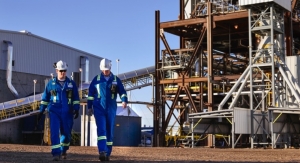08.28.19
A recent study foresees promising growth prospects for the cool roof coating market, with a volume increase in 2018 over 2017 estimated at nearly 39,000 MT.
Cool roof coatings have emerged as an effective remedy to urbanization challenges, with elevating energy demand and scorching temperatures across tropical and subtropical regions. Additionally, cool roof coatings significantly aid in offsetting the strain on electric grids owing to increasing demand for cooling and air conditioning abreast rising living standards.
Elastomeric plastic has traditionally reigned supreme among roofing materials in the cool roof coating market. Over 6 in 10 MT of cool roof coatings seek demand from these roofing materials, with global sales estimated at over 400,000 MT in 2018. The relative superiority of elastomeric plastic in terms of performance over its counterparts, such as tiles and metals, continues to underpin its supremacy in the cool roof coating market.
The study estimates cool roof coating sales for low-sloped roofs to exceed 395,000 MT in 2018. Low-sloped roofs are a common visual in industrial and commercial buildings, and as construction activities in these sectors continue on an upward spiral alongside urbanization, demand for cool roof coatings for low-sloped roofs will remain significant. Additionally, implementation of regulations for roofing materials and green building codes apropos industrial and commercial structures have led to higher demand for cool roof coatings as a result.
“Steep-sloped roofs are majorly observed in individual homes, particularly in countries with high snowfall and rainfall. Lower maintenance required in these in light of their structural advantage has resulted in comparatively lower penetration of cool roof coatings than in low-sloped roofs. However, the advent of advanced techniques and quick-drying colored coatings have attracted various consumers to use cool roof coatings, to curtail expenditure on energy in summers,” according to a lead analyst.
As impacts of climate change become increasingly visible, investment in sustainable technologies has spurred worldwide for improving the resilience of cities. Application of cool roof coating to complement a building structure’s environmental performance along with installations of solar panels continues to gain high focus among prominent cities across the globe. Several cool roof programs by local authorities worldwide such as Eco-Incentive Roof Program (Toronto), and NYC Cool Roofs, have further created significant demand for cool roof coating in the recent past.
Cool roof coating has gained paramount importance as a key solution to reduce urban heat island effect, combat climate change, and improve air quality. Reduction in peak load on electric grids that leads to increased energy access and enhanced community resilience to high temperatures are key benefits of cool roof coating, which continue to uphold its market growth.
The cool roof coating market is primarily characterized by the presence of multinational companies, which have robust distribution channels and higher brand visibility. The study states that these players collectively account for over one-fourth share of the cool roof coating market. However, the majority share of the cool roof coating market, over 50% is expected to remain hinged collectively at the cluster of Tier 2 players.
The regional players, such as GAF Materials Corporation, and Nippon Paint Holdings Co. Ltd., have established a presence in emerging markets such as Asia-Pacific, as the region hold significant latent opportunities for the industry. China remains the most lucrative country for sales of cool roof coatings, with global sales estimated at nearly 220,000 MT in 2018.
Cool roof coatings have emerged as an effective remedy to urbanization challenges, with elevating energy demand and scorching temperatures across tropical and subtropical regions. Additionally, cool roof coatings significantly aid in offsetting the strain on electric grids owing to increasing demand for cooling and air conditioning abreast rising living standards.
Elastomeric plastic has traditionally reigned supreme among roofing materials in the cool roof coating market. Over 6 in 10 MT of cool roof coatings seek demand from these roofing materials, with global sales estimated at over 400,000 MT in 2018. The relative superiority of elastomeric plastic in terms of performance over its counterparts, such as tiles and metals, continues to underpin its supremacy in the cool roof coating market.
The study estimates cool roof coating sales for low-sloped roofs to exceed 395,000 MT in 2018. Low-sloped roofs are a common visual in industrial and commercial buildings, and as construction activities in these sectors continue on an upward spiral alongside urbanization, demand for cool roof coatings for low-sloped roofs will remain significant. Additionally, implementation of regulations for roofing materials and green building codes apropos industrial and commercial structures have led to higher demand for cool roof coatings as a result.
“Steep-sloped roofs are majorly observed in individual homes, particularly in countries with high snowfall and rainfall. Lower maintenance required in these in light of their structural advantage has resulted in comparatively lower penetration of cool roof coatings than in low-sloped roofs. However, the advent of advanced techniques and quick-drying colored coatings have attracted various consumers to use cool roof coatings, to curtail expenditure on energy in summers,” according to a lead analyst.
As impacts of climate change become increasingly visible, investment in sustainable technologies has spurred worldwide for improving the resilience of cities. Application of cool roof coating to complement a building structure’s environmental performance along with installations of solar panels continues to gain high focus among prominent cities across the globe. Several cool roof programs by local authorities worldwide such as Eco-Incentive Roof Program (Toronto), and NYC Cool Roofs, have further created significant demand for cool roof coating in the recent past.
Cool roof coating has gained paramount importance as a key solution to reduce urban heat island effect, combat climate change, and improve air quality. Reduction in peak load on electric grids that leads to increased energy access and enhanced community resilience to high temperatures are key benefits of cool roof coating, which continue to uphold its market growth.
The cool roof coating market is primarily characterized by the presence of multinational companies, which have robust distribution channels and higher brand visibility. The study states that these players collectively account for over one-fourth share of the cool roof coating market. However, the majority share of the cool roof coating market, over 50% is expected to remain hinged collectively at the cluster of Tier 2 players.
The regional players, such as GAF Materials Corporation, and Nippon Paint Holdings Co. Ltd., have established a presence in emerging markets such as Asia-Pacific, as the region hold significant latent opportunities for the industry. China remains the most lucrative country for sales of cool roof coatings, with global sales estimated at nearly 220,000 MT in 2018.





